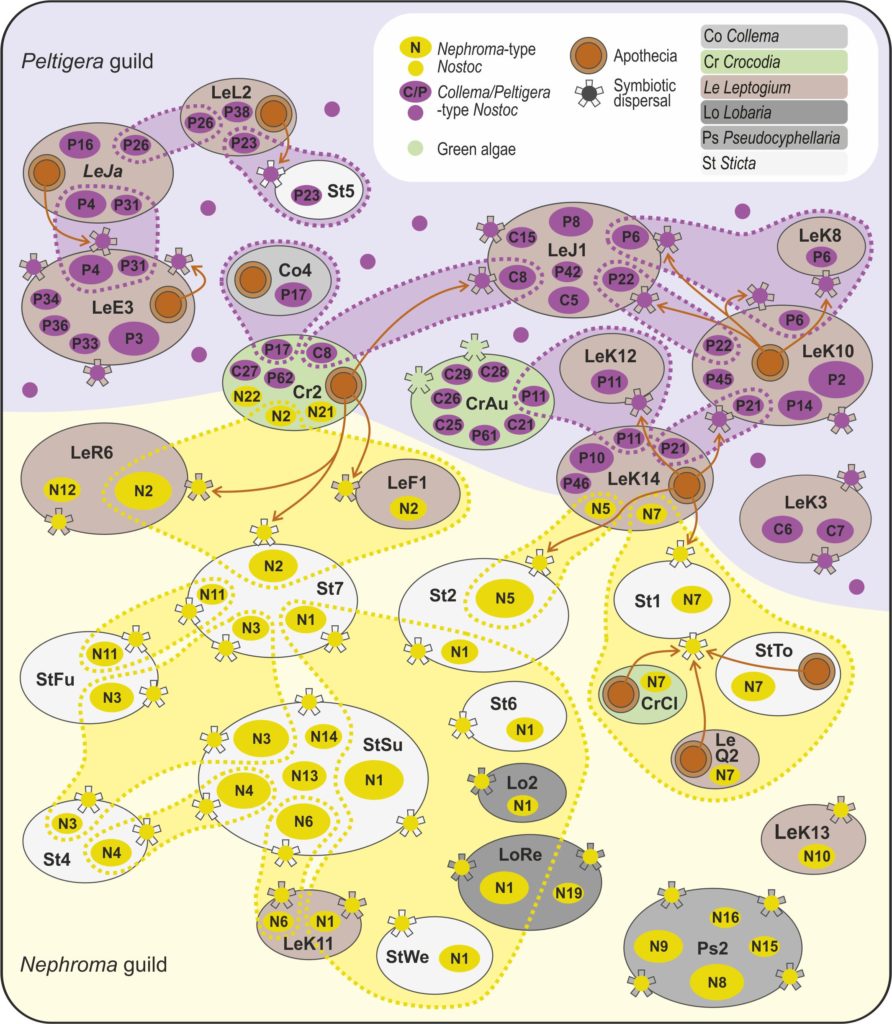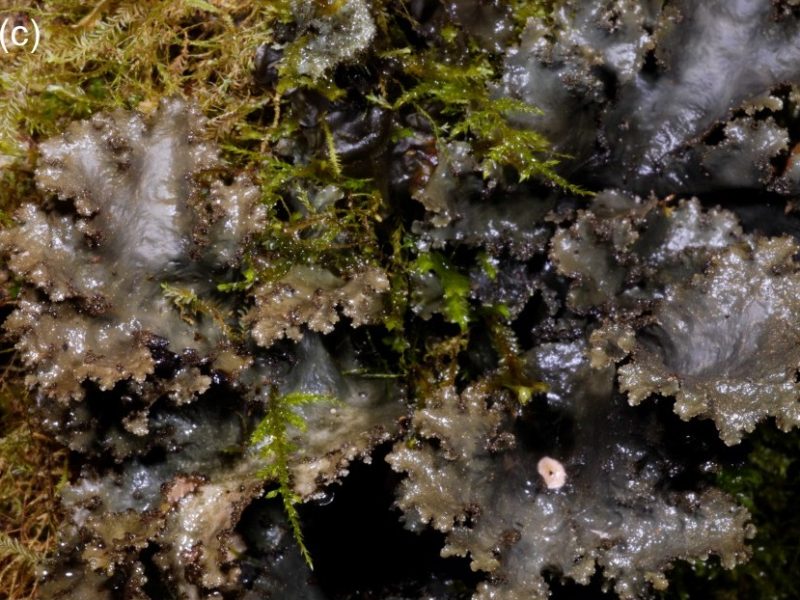Interactions within lichen communities are diverse, including the specific symbiotic associations between the lichenized fungi (mycobionts) and photobionts but also interactions between different lichen species and various other microorganisms. In the tropical montane forests of the Taita Hills in southern Kenya, mycobiont species associating with Nostoc cyanobacteria (cyanobionts) commonly share their cyanobionts with other lichen species, forming several photobiont-mediated lichen guilds. The Nostoc photobionts belong to two main groups, the Nephroma-type Nostoc and the Collema/Peltigera-type Nostoc, and nearly all mycobionts associate only with variants of one group. Among the mycobionts, species that produce cephalodia and those without symbiotic propagules tend to be more promiscuous in cyanobiont choice. The extent of photobiont sharing and the structure of interaction networks differ dramatically between the guilds that associate with different types of cyanobionts, presumably reflecting the differences in the ecological characteristics and/or requirements of the two main groups of cyanobionts. The same two groups of Nostoc have previously been identified from many lichens in various lichen-rich ecosystems in different parts of the world, indicating that photobiont sharing between fungal species is an integral part of lichen ecology globally. In many cases, symbiotically dispersing lichens can facilitate the dispersal of sexually reproducing species, promoting establishment and adaptation into new and marginal habitats and thus driving evolutionary diversification.
Kaasalainen U, Tuovinen V, Mwachala G, Pellikka P, Rikkinen J. 2021. Complex interaction networks among cyanolichens of a tropical biodiversity hotspot. Frontiers in Microbiology doi.org/10.3389/fmicb.2021.672333.

Keywords: symbiosis, Peltigerales, Peltigera type Nostoc, Nephroma type Nostoc, East Africa, Eastern Afromontane biodiversity hotspot

